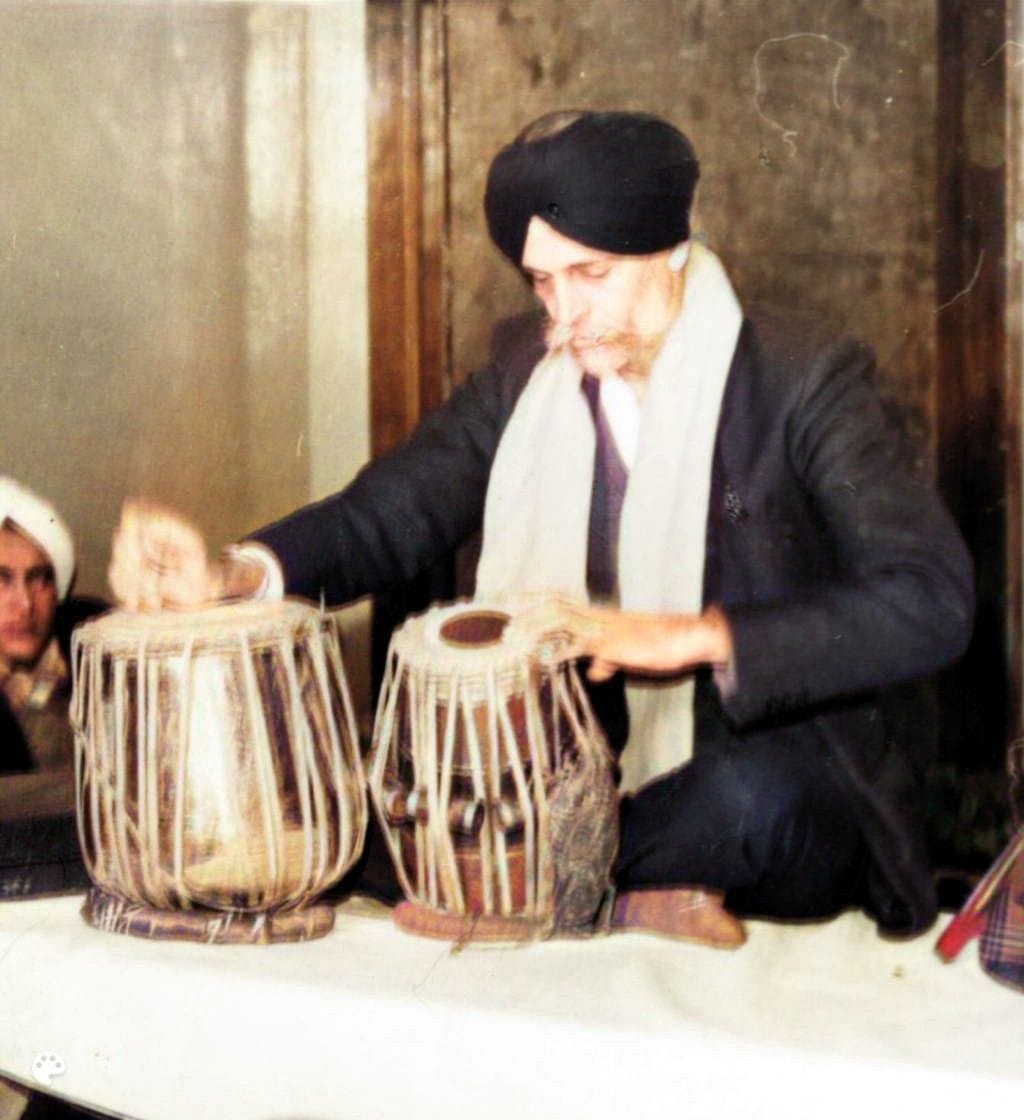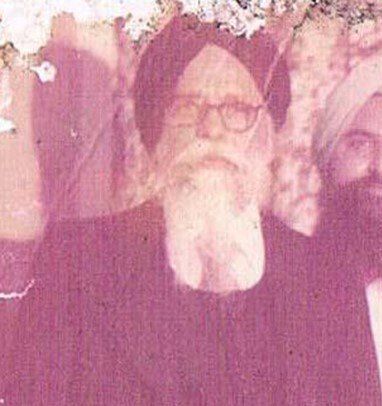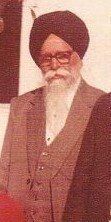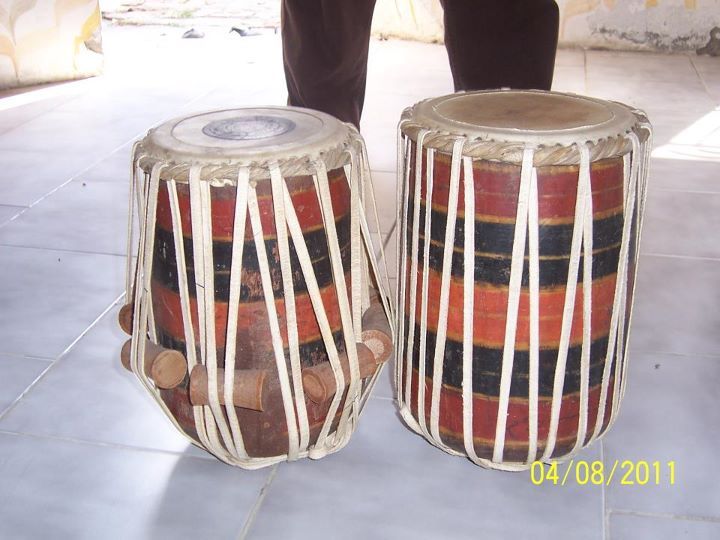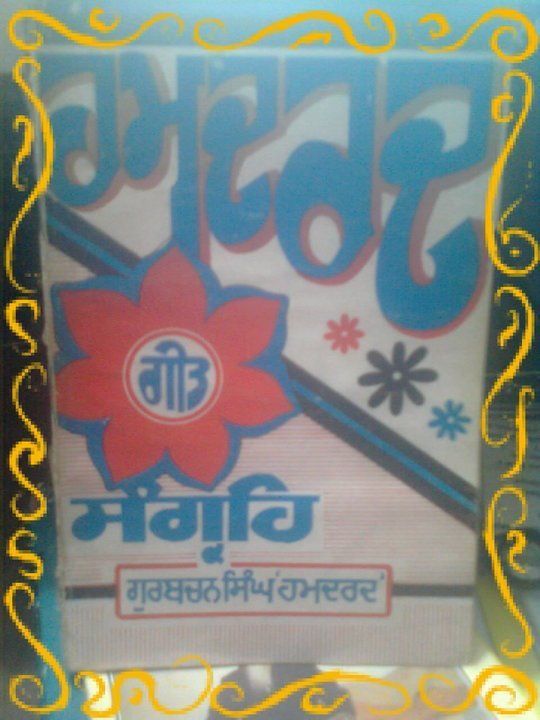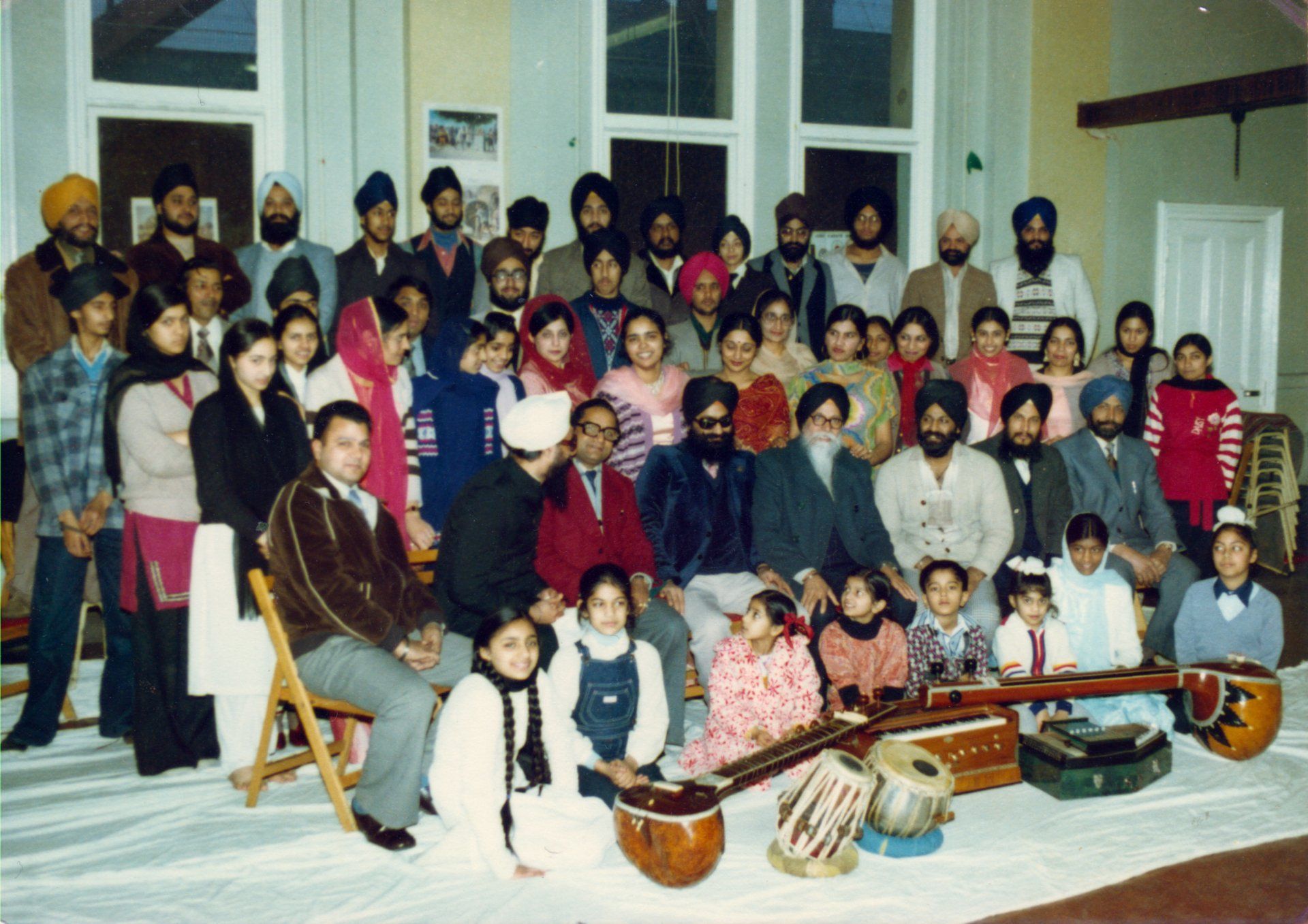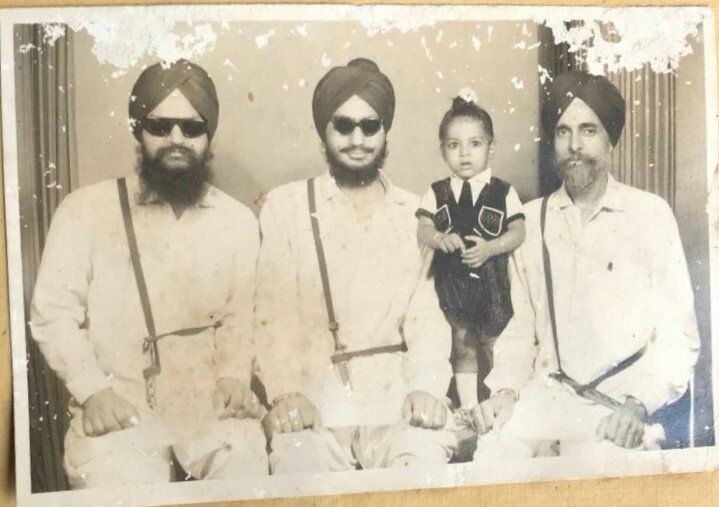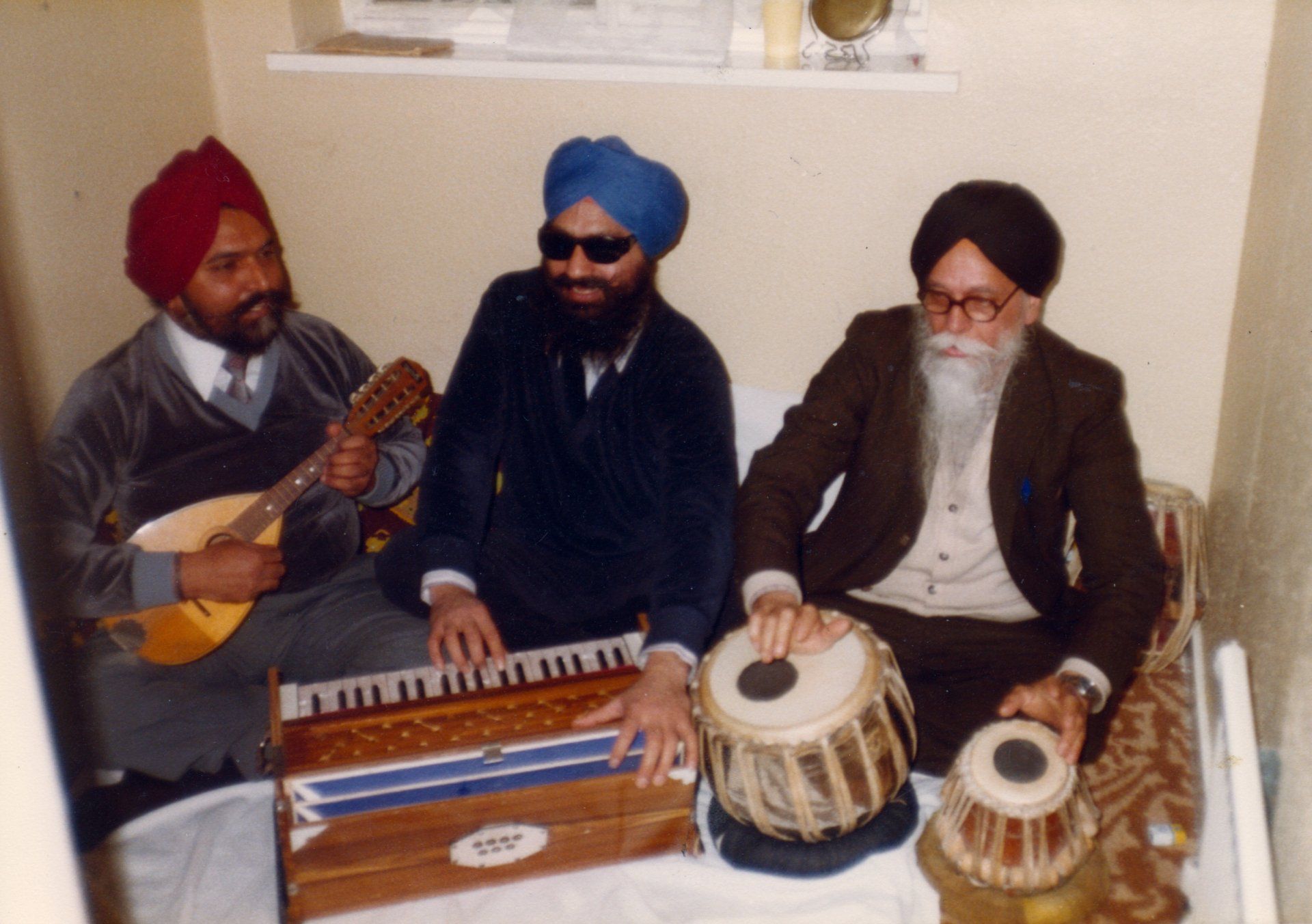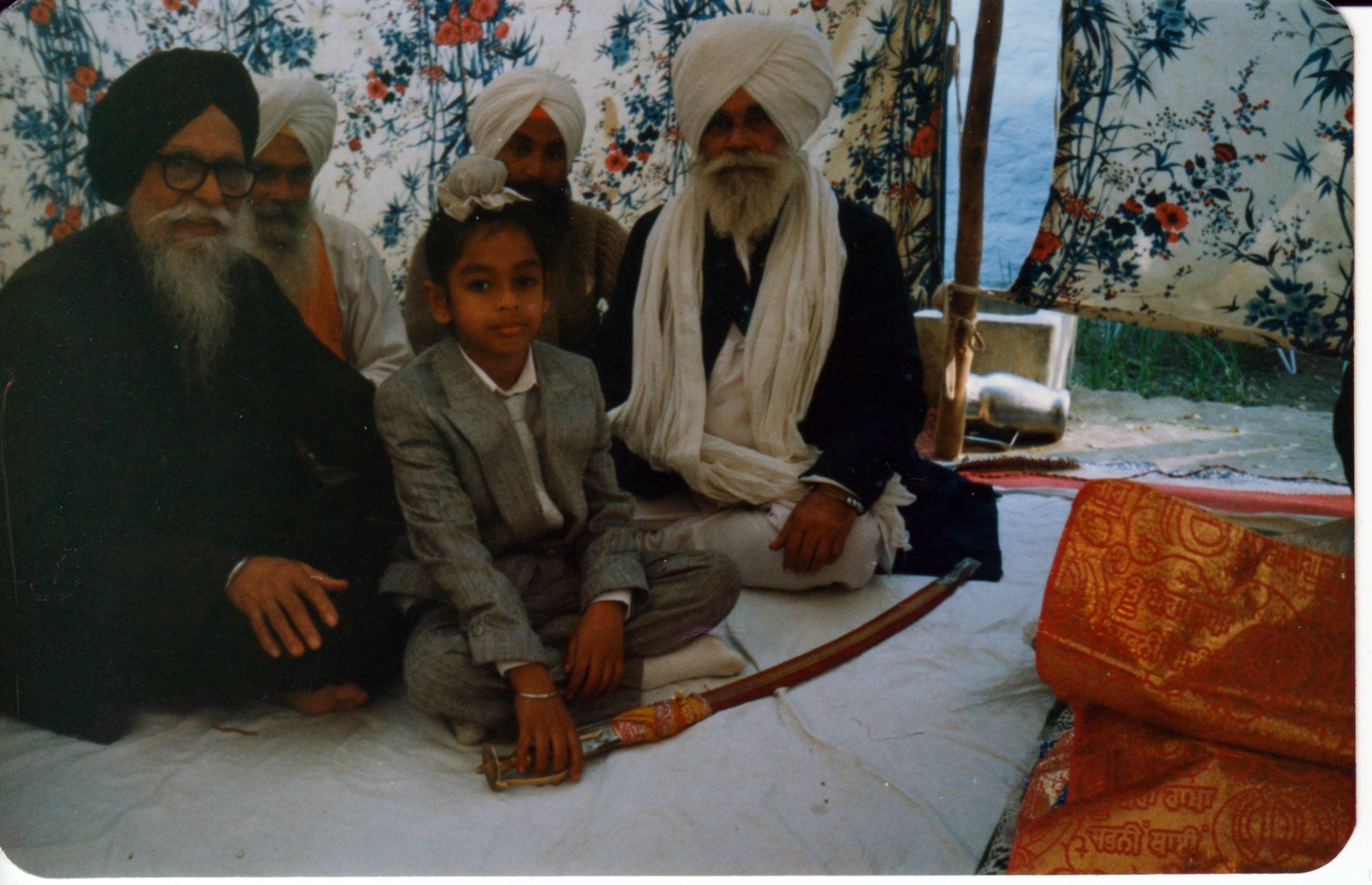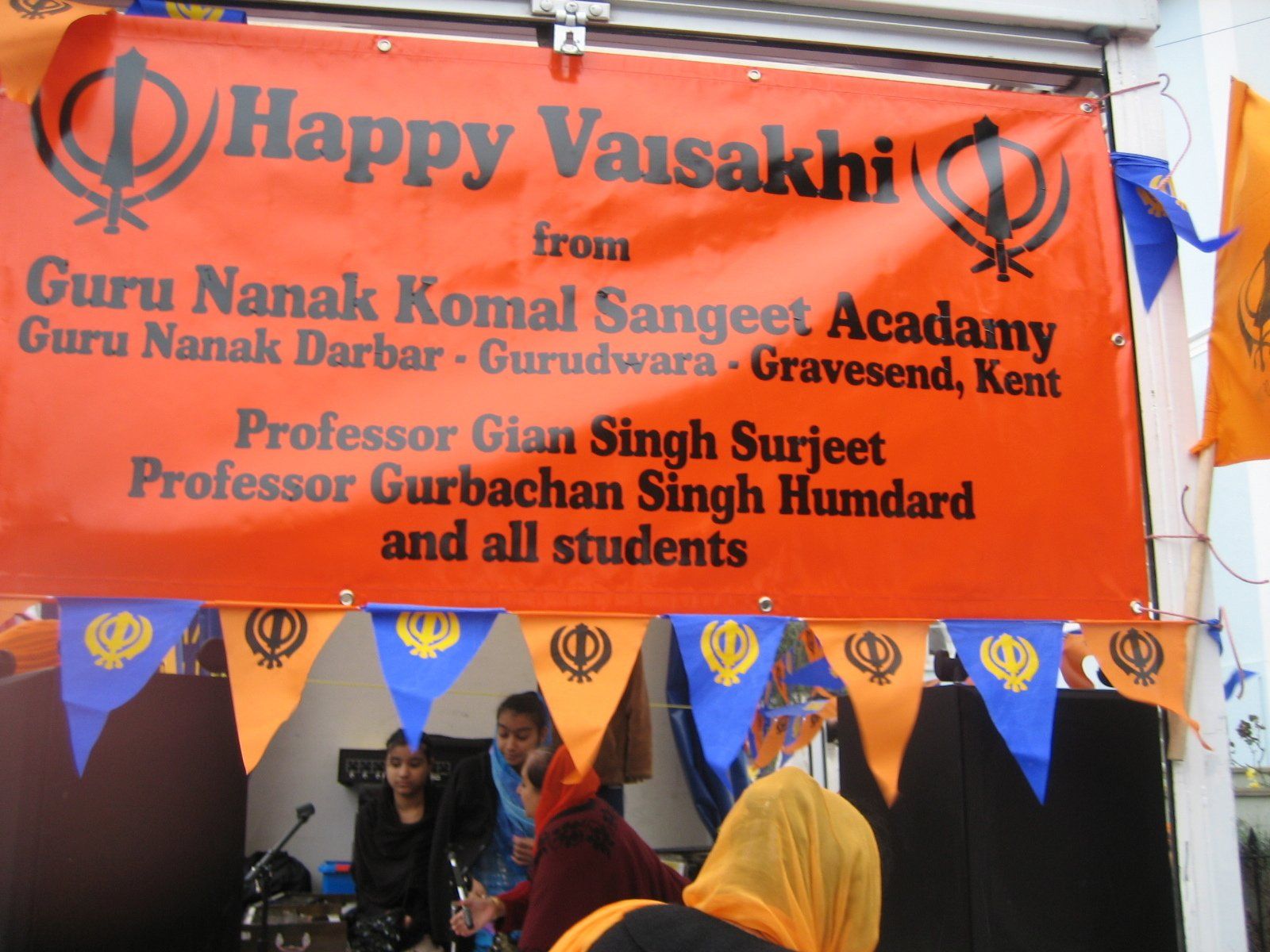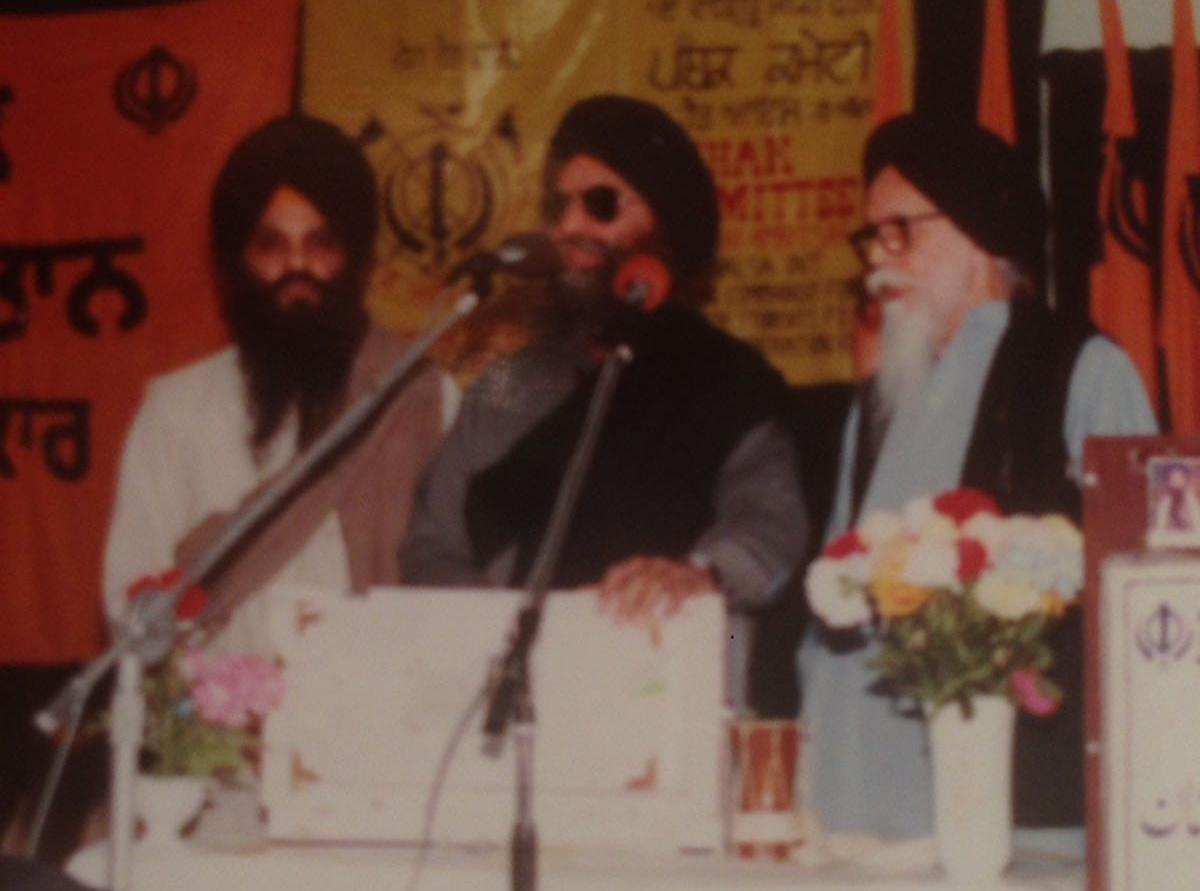Giani Gurbachan Singh Hamdard
Giani Gurbachan Singh Hamdard was born in the Punjabi village of Laksihan, District Hoshiarpur, in the house of Sardar Khazaan Singh and Mata Prem Kaur. Hamdard Ji’s Gursikh way of life was passed down from their forefathers. Hamdard Ji’s personality was very kindhearted, loving and caring, from their childhood. After completing their formal school education at Khalsa High School, Baddon, Hamdard Ji was fully committed to their sangeet education.
It should be noted that Hamdard Ji chose to attend the Khalsa High School in Baddon, approximately 4km away, despite there being many other schools in the local vicinity, due to his love, commitment and passion for Sikhi and the Khalsa traditions. Khalsa High School in Baddon was relatively new at the time, but a very notable Khalsa school in Punjab, which was known for its and its student’s devotion and commitment to Sikhi. Hamdard Ji was an adept Gatkayee (Gatka practitioner) and a keen football player, playing in the left out position (winger) for the Khalsa High School team.
Initially the children from Baddon would travel to nearby Nadalon for their education but the village of Baddon was well known for it’s residents strong commitment to Sikhi. One day, while at school, the Baddon children were bullied and some Nadalon local students had placed a packet of cigarettes into a childs backpack from Baddon. Once the Baddon students found out, they went back to their village and spoke with their elders to explain what had happened. The village elders went to Nadalon and complained to the school master by trying to explain that they could not accept this type of behaviour as they were strictly practising Sikhs. The elders were taunted and dismissed by being told to start a “Sikh” school of their own if they possibly could as this sort of thing would continue to happen in Nadalon. The elders did just that. They built and started a Khalsa School, which was well renowned and maintained this reputation.
The elders of Baddon were committed to their faith which was well known among the Sikh Panth. The elders in the village had donated Rs. 125,000 to the newly formed Shiromani Gurdwara Parbandhak Committee of the time in sewa for the Panth.
Hamdard Ji married Chanan Kaur, daughter of Sardar Miha Singh and Mata Dhanwant Kaur from the village of Paddi Sura Singh, who were also a very religious and devoted Gursikh family. In later years, Sardar Miha Singh would pass down a Puratan Guru Granth Sahib Ji Saroop, other puratan Granths and Sikh instruments, such as a Rabab, Sarangi and Siranda from the Guru's period, for Hamdard Ji to look after as he was deemed worthy of such a task. Over the years, Hamdard Ji and Mata Chanan Kaur went on to have five children. Mohinder Kaur, Ajit Singh, Surinder Kaur, Bhupinder Singh and Satwinder Singh.
In their youth, Hamdard Ji had the honour of becoming Komal Ji’s first and most senior student and began learning tabla from Ustad Ji. Hamdard Ji was very adept in learning tabla and caught on very quickly.
Prior to meeting Komal Ji, Hamdard Ji had expressed to his older brother, Jathedar Amar Singh (a renowned Dhadi in the region) that he wanted to learn to play Tabla. Therefore, Jathedar Amar Singh took Hamdard Ji to the famous Ustad Taati Shah of Panjoa. However, upon meeting with Ustad Taati Shah, they realised he was about to depart on a Hajj trip to Mecca but decided on giving Hamdard Ji a quick starter lesson by teaching the first basic sound on the tabla, “Ta”. Hamdard Ji was instructed by Ustad Taati Shah, to keep practising this and he will continue teaching on his return in approximately 30 days.
During this time, Hamdard Ji quickly mastered the basic instructions, but Waheguru had different plans. While Ustad Taati Shah was away on his Hajj pilgrimage, Jathedar Amar Singh and Hamdard Ji went to the famous Sarhala mela, better known as Bhai Sher Singh Da Mela and upon arriving, they heard an instrument unfamiliar to them being played on the stage but they were extremely drawn to it, by ‘Sangeet Professor Darshan Singh’. They waited for Darshan Singh to finish at which point both Jathedar Amar Singh and Hamdard Ji approached him and enquired about him and his instrument. Darshan Singh (who was not known as “Komal” at the time) went on to explain that he was playing the banjo and was from the village of Nangal Kalan, and that he got his initial vidiya with renowned Ustad Bhai Sain Ditta Ji at Chief Khalsa Diwan, Amritsar and then in Multan as a student and instructor at the school of Master Hukam Chand. Komal Ji had the burning desire of teaching and imparting his vast knowledge of Sangeet to others and was desperate to start a vidiyala and did not want to return to their village Nangal. Hamdard Ji explained his situation with Ustad Taati Shah, and Komal Ji asked Hamdard Ji to show what he had already learned. Both Jathedar Amar Singh and Hamdard Ji requested Komal Ji accompany them to their village and discuss this further there as they were eager and willing to learn from such a learned master. Komal Ji agreed and went to Laksihan with Hamdard Ji and Jathedar Amar Singh, where Hamdard Ji formally affirmed Komal Ji as their Ustad.
Hamdard Ji was Komal Ji’s first student, followed by Niranjan Singh (Laksihan), Jathedar Amar Singh (Laksihan), Sarwan Singh (Accharwal) and Kehar Singh (Accharwal). These five students along with Komal Ji came up with the name Guru Nanak Sangeet Vidiyala and the students actively sought instruction from Komal Ji within this vidiyala.
In this time, Komal Ji taught Hamdard Ji several taal and bol on the Tabla which Hamdard Ji quickly mastered. At the end of the 30 days when Ustad Taati Shah was due to return from his pilgrimage to Mecca, Hamdard Ji went back to him, and Ustad Taati Shah asked Hamdard Ji how he was getting on with his initial lesson. Hamdard Ji went on to give him a demonstration and showed what they had learned from Komal Ji within the space of 30 days. Ustad Taati Shah was amazed at the progress and was visibly stunned. He asked which Ustad Hamdard Ji had received this knowledge from, and Hamdard Ji went on to explain. He highly praised Komal Ji and his teaching abilities.
Komal Ji also started a Ragi and Dhadi Jatha at this time and Hamdard Ji accompanied them on tabla. As well as Komal Ji and Hamdard Ji, other members of this Jatha included Jathedar Amar Singh, Kartar Singh (Sarangi Master), Chanan Singh Nirmaan and Karam Singh Bahowal.
From 1935 onwards, Komal Ji spent most of their life with Hamdard Ji, who was their first student, friend, trusted companion and close confidant. They both enjoyed an Ustad-Mittar relationship which was to endure until Komal Ji’s death in 1962. Komal Ji would also have Hamdard Ji scribe their numerous compositions to record on paper, which they did until the end.
Niranjan Singh (Laksihan), Dharam Singh Zakhmi, Shamsher Singh, Jathedar Amar Singh (Laksihan), Sarangi Master Kartar Singh (Laksihan), Chanan Singh Nirmaan and Gurbachan Singh Beeka were among their close group of friends (Gurbhai’s).
Hamdard Ji devoted their time to Komal Ji, and accompanied their Ustad and friend, while serving the Panth through Kirtan and Dhadi, until the time of Komal Ji’s death in 1962, after which the formation of this jatha changed to include Giani Gurbachan Singh Hamdard, Bhai Didar Singh (Nangal Khurd) and Bhai Gian Singh Surjit which dedicated their time to serve the Panth for around five years until 1967. Bhai Ajit Singh Lutera also joined them during this time.
In 1967, Hamdard Ji moved to England and shortly after, the following year in 1968, Gian Singh Surjit also came to England. This would become the new form of the Jatha, which would go on to serve the sangat and Panth. Both Gurbachan Singh Hamdard and Gian Singh Surjit continued Komal Ji's legacy and set up the Guru Nanak Sangeet Vidiyala in Gravesend and surrounding areas, and taught several generations, with countless students the art of Gurmat Sangeet, dedicating their lives to spreading Gurmat and creating countless Gurmat Kirtaniye.
This vidiyala in later years went on to be renamed as Guru Nanak Komal Sangeet Vidiyala in tribute to their Ustad, Komal Ji, which still continues to this day, being led by Parvinder Singh Lalli and Harkiret Singh Bahra, students of Giani Gurbachan Singh Hamdard and Giani Gian SIngh Surjit in Gravesend. Following Giani Gurbachan Singh Hamdard and Giani Gian Singh Surjit, Giani Sital Singh Sitara assumed responsibility and resumed teaching the students of this vidiyala, until his death in 2021.
Hamdard Ji was an accomplished Tabla master and Dhadi, as well as a prolific author and lyricist. Using select words and language, Hamdard Ji created many fine compositions. Hamdard Geet Sangreh and Ik Soch Tin Rang are two books which Hamdard Ji gave to their mother tongue Punjabi. Since the 1970s, Hamdard Ji was an official examiner for the Pracheen Kala Kendra Music Academy, Chandigarh, which operated in the UK under the Overseas Indian Music College.
When reaching England in 1967, at a Sikh, Hindu, Muslim joint mehfil, the first geet Hamdard Ji sang was Komal Ji’s geet “Badli Duniya Zamane Badal Gaye, Saaz Badle Tarane Badal Gaye.” This was sung along with Sardar Ravinder Singh Khera.
With their loving and caring personality and persona, Hamdard Ji made many friends and companions along the way, among which are Jathedar Tirath Singh (Lalliyan) UK, Ravinder Singh Khera, Karnail Singh, Jarnail Singh, Gurdial Singh Atwal, Kesra Singh, Sewa Singh (Kot Fatuhi), Kabul Singh Sodhi.
On 6th December 1969, at the Royal Albert Hall in London, Guru Nanak Dev Ji’s Parkash Utsav was celebrated and both Hamdard Ji and Surjit Ji attended in the audience as they were not an invited Jatha. There were many people present who were very familiar with the Jatha and its history, from Punjab and since they had arrived in England and wanted for them to be given time on the stage due to their immense popularity. Dozens of people were insisting with the event organisers that Hamdard Ji and Surjit Ji be given time, but the jatha was not given time on stage by the organisers. Many people in attendance and friends strongly objected to this.
The High Commissioner of India, His Excellency Sri Apa Pant was invited as an honourable guest to the event and he came to know of this as sways of people were approaching the event organisers and strongly insisting the jatha be given time. At this point, the High Commissioner, Apa Pant specifically requested to the organisation team that Hamdard Ji’s jatha be given half of his allocated time on stage (5 minutes). Hamdard Ji and Surjit Ji went on stage and sang the following Komal Ji’s composition regarding the Gurpurab of Guru Nanak Dev Ji;
1) Ajj Punjiya Di Raat Anokhi, Sakhi Ni Chann Do (click link to view)
At that time, many sangat in attendance of this event have said that Guru Nanak Dev Ji was “present” (Haazar) within the congregation itself. During the time these geet were recited by the jatha, there were pound notes were “pouring” from the galleries on all four sides as sangat was giving the jatha money for the renditions of Komal Ji’s geet. Sangat at the event have stated over the years that “pound(an) da mee warsayia” meaning it was raining pound notes and that they had never seen that occur before or after that event.
After hearing this first geet, the High Commissioner Apa Pant got up and approached the stage to give the jatha a five pound note, as well as to request that the Jatha sing another geet “Ek aur sunayeeye” as the entire audience was amazed. The High Commissioner then allocated the remainder of his allotted 5 mintues to Hamdard Ji and Surjit Ji who then went onto sing the following of Komal Ji’s compositions;
2) Sach Kade Lukayia Lukda Nahi
The following week, there was also another celebration for Guru Nanak Dev Ji’s 500th Gurpurab held in Birmingham, with a Nagar Kirtan, followed by a programme at Birmingham Town Hall, where the High Commissioner Apa Pant was once again in attendance as an honourable guest. The two Komal Ji’s compositions the jatha sang here were;
1) Deena Da Sahara Ajj Aagaya Jahan Te (click link to view)
2) Ajj Puniya Di Raat Anokhi, Sakhi Ni Chann Do which was sung upon request.
The High Commissioner gave the jatha a special acknowledgement. After this event, this jatha went on to do Gurmat Parchar throughout the UK, Europe, Canada and America.
In 1971, they released a vinyl record, which gave them the honour of having the first Punjabi record to be recorded and released outside of India. This record contained two Lok Geet;
1) Nazara Layea Dur Dur Da (click link to view)
2) Pipla Sajna De Pind Dia (click link to view)
After this, they also leant their voices to many records and cassettes.
Hamdard Ji manifested Gur Sikhiya into their life with devotion and lived their life according to Gurbani and Gurmat.

